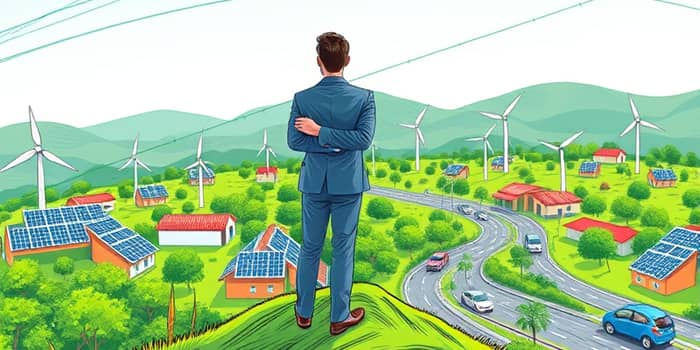
As the world races to decarbonize economies and reinvent energy systems, green venture capital emerges as one of the most compelling frontiers for accredited investors. With global VC investment projected to hit $400 billion in 2025 and sustainability mandates driving unprecedented opportunity, those who meet the accreditation criteria can align financial growth with environmental impact. This article unpacks the landscape, explains the requirements, and offers a practical roadmap to navigate this high-stakes, high-reward arena.
Over the past five years, climate tech and sustainability have soared to the top of venture capital portfolios. Backed by environmental, social, and governance mandates and reinforced by policy regimes like the US Inflation Reduction Act and the European Green Deal, investors are channeling significant capital into startups that promise to reshape energy, transportation, and industry.
Global VC investment is on track to increase from $300 billion in 2021 to projected to reach $400 billion in 2025. Yet, experts warn that while this growth is encouraging, it still falls short of what’s needed to meet the urgency of climate goals. Heightened investor protection and regulatory refinement are helping bridge this gap, but the pace of innovation must accelerate to match the scale of the crisis.
Unlike public market investors, accredited individuals and entities unlock access to non-public, higher-risk, high-reward opportunities. These include direct investments in early-stage climate tech startups, specialized venture funds, and pre-IPO syndicates that focus on sustainability.
In the United States, eligibility hinges on financial thresholds or professional credentials:
Green VC offers the promise of aligning investment returns with impactful climate action. Early investors in battery startups, modular nuclear projects, or next-gen solar have seen outsized returns as technologies matured and policy frameworks locked in market demand.
Yet, these ventures often sit at the cutting edge of science and regulation. Technology may fail to scale, markets can shift overnight, and funding gaps can jeopardize cash flow. Recent data suggests up to 50% of US VC-backed tech firms could exhaust capital within 12 months without further rounds—underlining the need for thorough due diligence and robust risk tolerance.
For accredited investors eager to make their mark, a systematic approach ensures both impact and return potential. Below are key stages to guide your journey:
In early 2024, a consortium of accredited investors led a $75 million Series B round for an AI-driven energy storage startup. Leveraging generative algorithms, the company reduced prototype development time from 18 months to just six, securing partnerships with utility-scale projects in Europe and North America. Within eight months, revenue forecasts doubled, and later rounds valued the startup at more than $1 billion. This example highlights how early-stage climate tech startups can deliver both impact and financial rewards when backed by informed, patient capital.
As climate challenges mount, the window for meaningful investment narrows. Accredited investors stand at a pivotal crossroads: continue with traditional asset classes or steer capital into ventures that promise to reshape our planet’s future. By understanding the landscape, meeting accreditation criteria, and following a disciplined investment process, you can unlock a world where financial success and environmental stewardship go hand in hand.
Now is the moment to act. With the right strategy and partners, your capital can accelerate the transition to a low-carbon economy and reap the benefits of one of the most dynamic sectors of the decade. Embrace green venture capital and become a catalyst for both profit and planetary progress.
References













